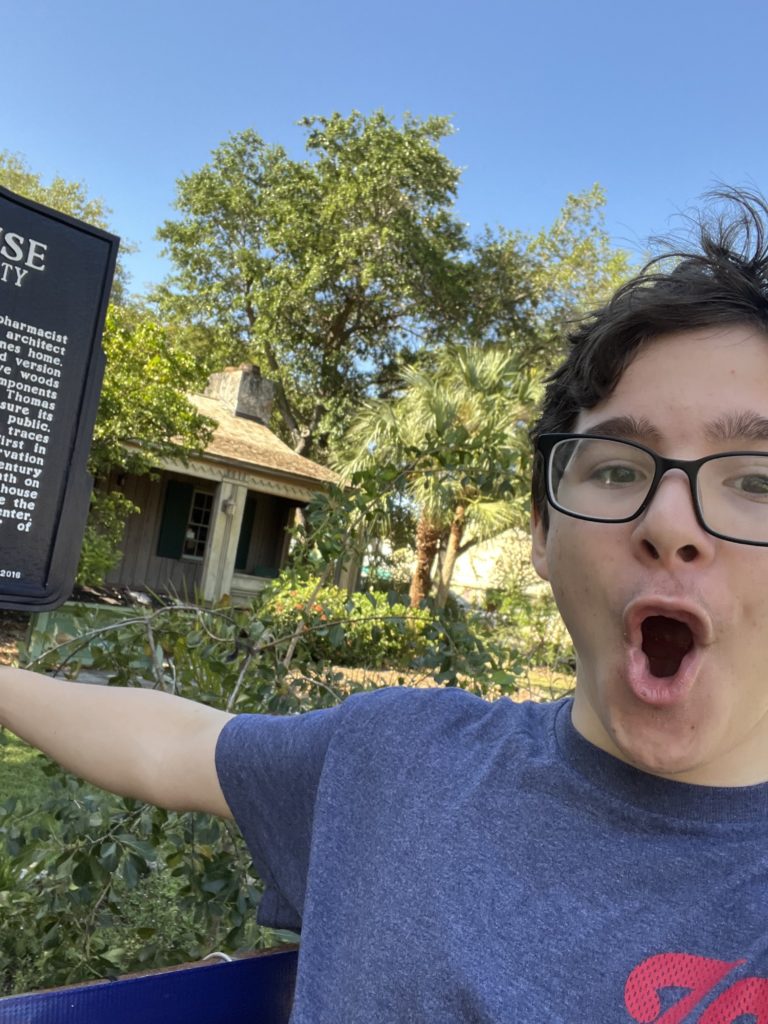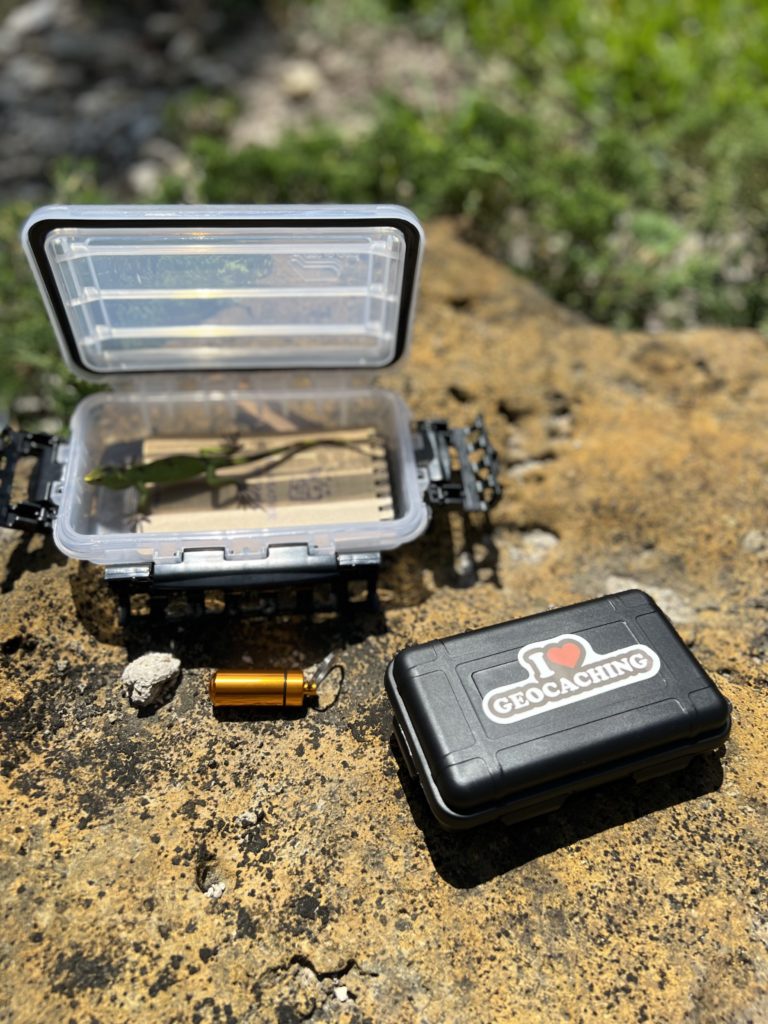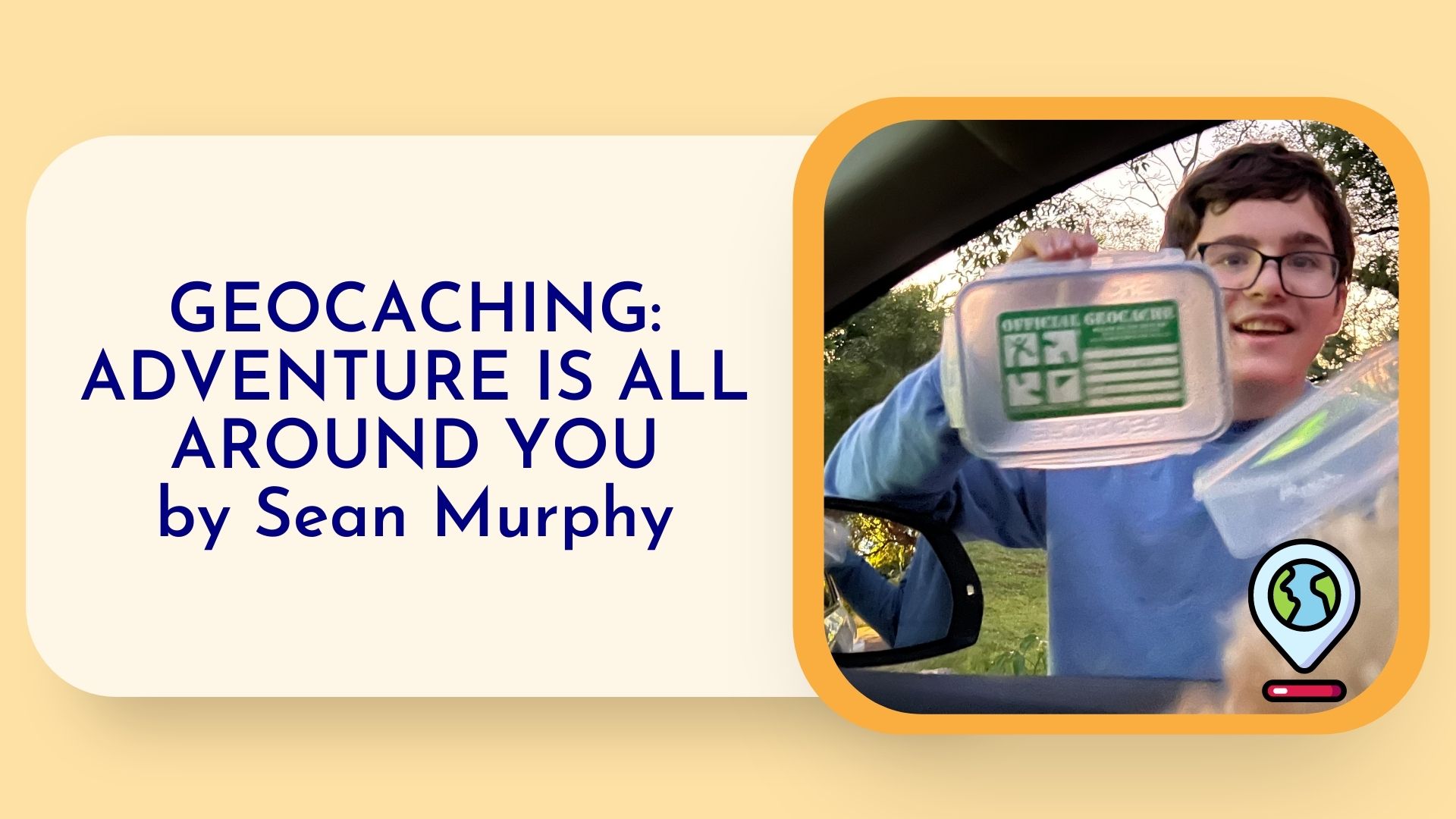Geocaching is an outdoor adventure you can do anytime, day, and anywhere. To play, use a Geocaching app to navigate to cleverly hidden containers called geocaches. What you are looking for varies by size, shape, and difficulty, from tiny capsules the size of your pinky to big boxes. You first choose a cache you want to look for; you get the general location, a hint, and specs, but no pictures. The app will get you within 45 feet of the cache location, and then you use your eyes, hands, and detective skills to locate the treasure.
Cache containers come in all shapes and sizes, so you are never sure exactly what you are looking for. Once you find the cache, sign the logbook, and if there is a treasure inside, you can trade trinkets by taking something from the treasure and leaving something for the next person to find. Don’t be discouraged if you don’t find one! Many of them are quite easy to miss or could have been taken by someone not in the know (called muggling, as people who don’t know are referred to as ‘muggles’). There are a few different types besides the ones we described though. There are things such as “double caches,” which contain the clue and location of the actual cache in it, puzzle caches, which are in plain sight but require a complex puzzle to open (these are rare though), and more! Is someone feeling bored? Hop in the car or go for a walk around the neighborhood looking for cache sites. You can spend all day doing it or just a few minutes.
Another big part of why it’s so great is because it is a worldwide thing! They can range from the top of Mount Everest to right on your street! The only country they aren’t in is North Korea. There are nearly 3,000 geocaches around Miami, so what are you waiting for?

Here Are Some Pro Tips:
Be Environmentally Friendly: Geocaching can be a way to learn about the environment and help clean it up. Some use caching as a cache-in, trash-out activity.
Leave No Trace: Be careful of the area around the cache—don’t trample the plants, damage sprinkler heads, etc., in your frenzy to find the cache. Follow all laws and regulations, and most importantly, never enter private property without permission.
Use your senses: Your smartphone will only get you within about 45 feet of the cache location. So, when you get close, use your eyes, hands, and geo-senses to locate the cache. Look for something that seems out of place. Cache containers come in all sizes, shapes, and colors. It could be a box, a trinket, or a small cylinder. Look in tree hollows, under benches, inspect that railing, but always look in that spot you’re 100% sure is not the hiding place because when you can’t find it, that’s exactly where the cache is.

Think like a detective: Geocaches are not supposed to be buried, but they won’t always be on the ground. Think where you might hide it if you were looking for a spot. Also, recheck the hint. Many cache pages offer a hint that may help you figure out where to look.



